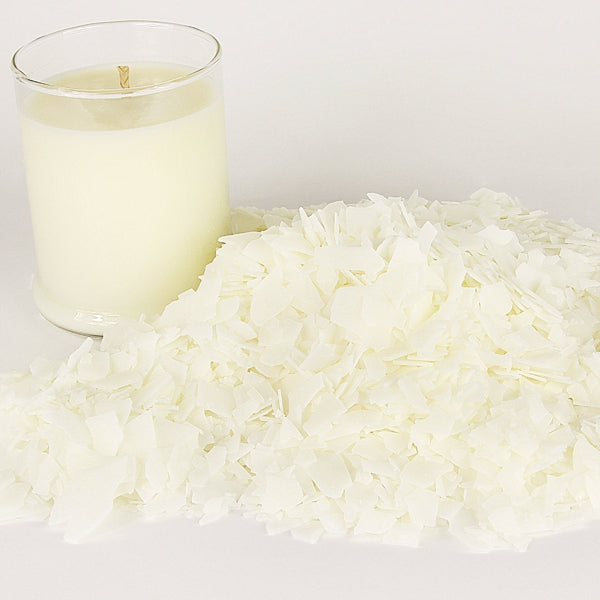Instill Your Home with the Fragrance of Crystal Soy Candles and Home Fragrance
Instill Your Home with the Fragrance of Crystal Soy Candles and Home Fragrance
Blog Article
From Wick to Wax: Understanding the Chemistry Behind Soy Wax Candles and Their Environmental Influence
As we illuminate our areas with the warm glow of candles, there lies a world of intricate chemistry behind the relatively basic act of lighting a soy wax candle. The selection between soy and paraffin wax extends beyond mere aesthetics, delving right into the world of ecological influence and the really make-up of the products. Comprehending the molecular framework of soy wax and its combustion procedure clarifies the emissions released into our surroundings. Join us as we decipher the scientific ins and outs behind soy wax candle lights and explore their effects on our environment.
Soy Wax Vs. Paraffin Wax
When comparing soy wax and paraffin wax for candle light production, it is necessary to understand the distinctive characteristics and benefits of each material. Soy wax is a natural, renewable energy originated from soybean oil, making it eco-friendly and eco-friendly - home fragrance. In contrast, paraffin wax is a by-product of oil refining, which elevates issues concerning its environmental influence and sustainability
Soy wax candle lights burn cleaner and produce much less residue compared to paraffin wax candle lights, making them a much healthier selection for indoor air high quality. In addition, soy wax has a lower melting point, permitting a longer-lasting candle that disperses scent better. Paraffin wax, on the other hand, often tends to burn faster and much less easily, potentially launching damaging chemicals into the air.
From a sustainability perspective, soy wax is favored for its biodegradability and renewable sourcing, aligning with the growing consumer preference for environmentally mindful products. While paraffin wax has actually been a standard option in candle making because of its affordability and ease of use, the shift in the direction of environment-friendly choices like soy wax is obtaining momentum in the sector.
Chemical Composition of Soy Wax

Burning Refine in Soy Candles
The chemical structure of soy wax directly influences the burning process in soy candles, affecting aspects such as burn time, scent launch, and environmental effect. When a soy candle light is lit, the warmth from the flame thaws the wax near the wick. This fluid wax is then formulated the wick as a result of capillary action. As the liquid wax gets to the fire, it evaporates and undertakes combustion. The burning procedure entails the vaporized hydrocarbons in the wax reacting with oxygen in the air to produce warm, light, water vapor, and co2.
The combustion effectiveness of soy candle lights is influenced by the purity of the soy wax and the top quality of the wick. Furthermore, soy wax candle lights have a lower ecological influence compared to paraffin candle lights due try this site to their biodegradable and eco-friendly nature.

Ecological Benefits of Soy Wax

Considered a lasting option to typical paraffin wax, soy wax offers remarkable environmental benefits that make it a preferred selection amongst eco-conscious consumers. Soy wax burns cleaner and produces much less soot than paraffin wax, contributing to better interior air quality and minimizing the demand for cleansing and maintenance. In general, the ecological benefits of soy wax line up with the expanding need for green and sustainable items in the market.
Recycling and Disposal Considerations
Reusing and appropriate disposal of soy wax candles play an important duty in preserving environmental sustainability and decreasing waste in households and communities. When it comes to reusing soy wax candle lights, the initial step is to make sure that the candle has actually melted entirely.

In terms of disposal, if recycling is not a choice, soy wax candles are naturally degradable and can be securely dealt with in most family waste systems. It is always recommended to examine with local recycling centers or waste administration services for particular standards on candle disposal to ensure appropriate handling and ecological security.
Final Thought
In conclusion, the chemistry behind soy wax candle lights discloses their environmental benefits over paraffin wax candles. Soy wax, acquired from soybean oil, burns cleaner and creates much less residue when compared to paraffin wax.
When contrasting soy wax and paraffin wax for candle light production, it is necessary to understand the unique features and benefits of each material (crystal soy candles).Soy wax candles shed cleaner and discharge less residue contrasted to paraffin wax candles, making them a healthier option for indoor air high quality.Taken into consideration a sustainable alternative to traditional paraffin wax, soy wax provides noteworthy ecological advantages that make it a prominent option amongst eco-conscious consumers. Soy wax burns cleaner and creates less soot than paraffin wax, contributing to much better indoor air high quality and reducing the need for cleaning and maintenance.In verdict, the chemistry behind soy wax candles exposes their ecological benefits over paraffin wax candle lights
Report this page